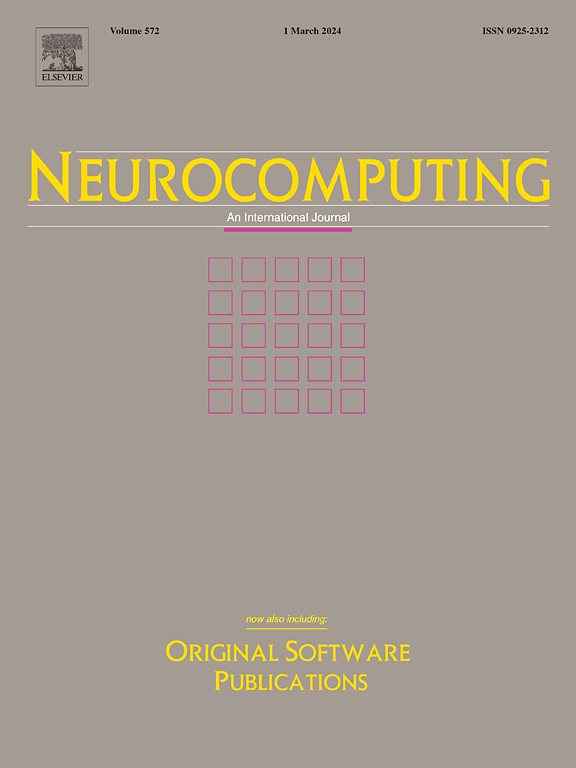Locality-constrained robust discriminant non-negative matrix factorization for depression detection: An fNIRS study
IF 5.5
2区 计算机科学
Q1 COMPUTER SCIENCE, ARTIFICIAL INTELLIGENCE
引用次数: 0
Abstract
Major depressive disorder (MDD) is having an increasingly severe impact worldwide, which creates a pressing need for an efficient and objective method of depression detection. Functional near-infrared spectroscopy (fNIRS), which directly monitors changes in cerebral oxygenation, has become an important tool in depression research. Currently, feature extraction methods based on multi-channel fNIRS data often overlook the local structure of the data and the subsequent classification cost. To address these challenges, we introduce an innovative feature extraction algorithm, namely locality-constrained robust discriminant non-negative matrix factorization (LRDNMF). The algorithm incorporates regularization, local coordinate constraints, within-class scatter distance, and total scatter distance, achieving a fusion of robustness, locality, and discrimination. LRDNMF enhances feature representation, reduces noise impact, and significantly boosts classification ability. Based on experimental results from 56 participants, LRDNMF achieves an accuracy of 90.55%, a recall of 91.48%, a precision of 90.46%, and an F1 score of 0.91 under full stimuli. These results outperform existing algorithms, validating the effectiveness of LRDNMF and demonstrating its significant potential in auxiliary diagnosis of depression.
定位约束鲁棒判别非负矩阵分解检测抑郁症:近红外光谱研究
重度抑郁症(MDD)在世界范围内的影响日益严重,迫切需要一种高效、客观的抑郁症检测方法。功能近红外光谱(fNIRS)可以直接监测脑氧合的变化,已成为抑郁症研究的重要工具。目前,基于多通道fNIRS数据的特征提取方法往往忽略了数据的局部结构和后续分类成本。为了解决这些挑战,我们引入了一种创新的特征提取算法,即位置约束鲁棒判别非负矩阵分解(LRDNMF)。该算法结合了1,2正则化、局部坐标约束、类内散射距离和总散射距离,实现了鲁棒性、局域性和判别性的融合。LRDNMF增强了特征表示,降低了噪声影响,显著提高了分类能力。基于56名参与者的实验结果,LRDNMF在全刺激下的准确率为90.55%,查全率为91.48%,查全率为90.46%,F1得分为0.91。这些结果优于现有算法,验证了LRDNMF的有效性,并展示了其在抑郁症辅助诊断方面的巨大潜力。
本文章由计算机程序翻译,如有差异,请以英文原文为准。
求助全文
约1分钟内获得全文
求助全文
来源期刊

Neurocomputing
工程技术-计算机:人工智能
CiteScore
13.10
自引率
10.00%
发文量
1382
审稿时长
70 days
期刊介绍:
Neurocomputing publishes articles describing recent fundamental contributions in the field of neurocomputing. Neurocomputing theory, practice and applications are the essential topics being covered.
 求助内容:
求助内容: 应助结果提醒方式:
应助结果提醒方式:


